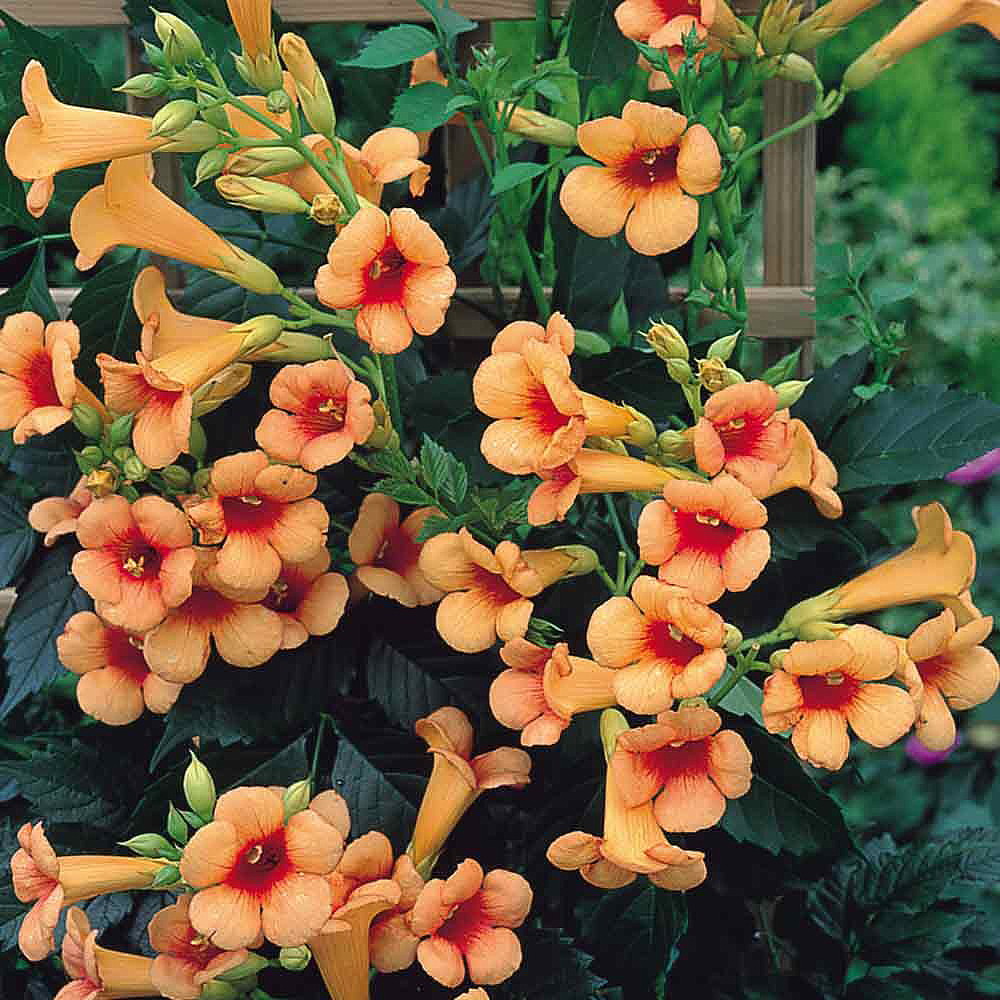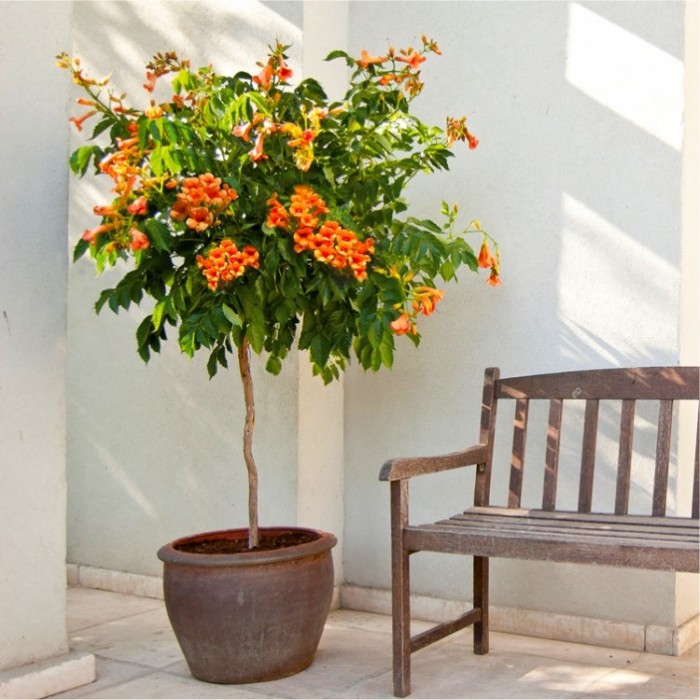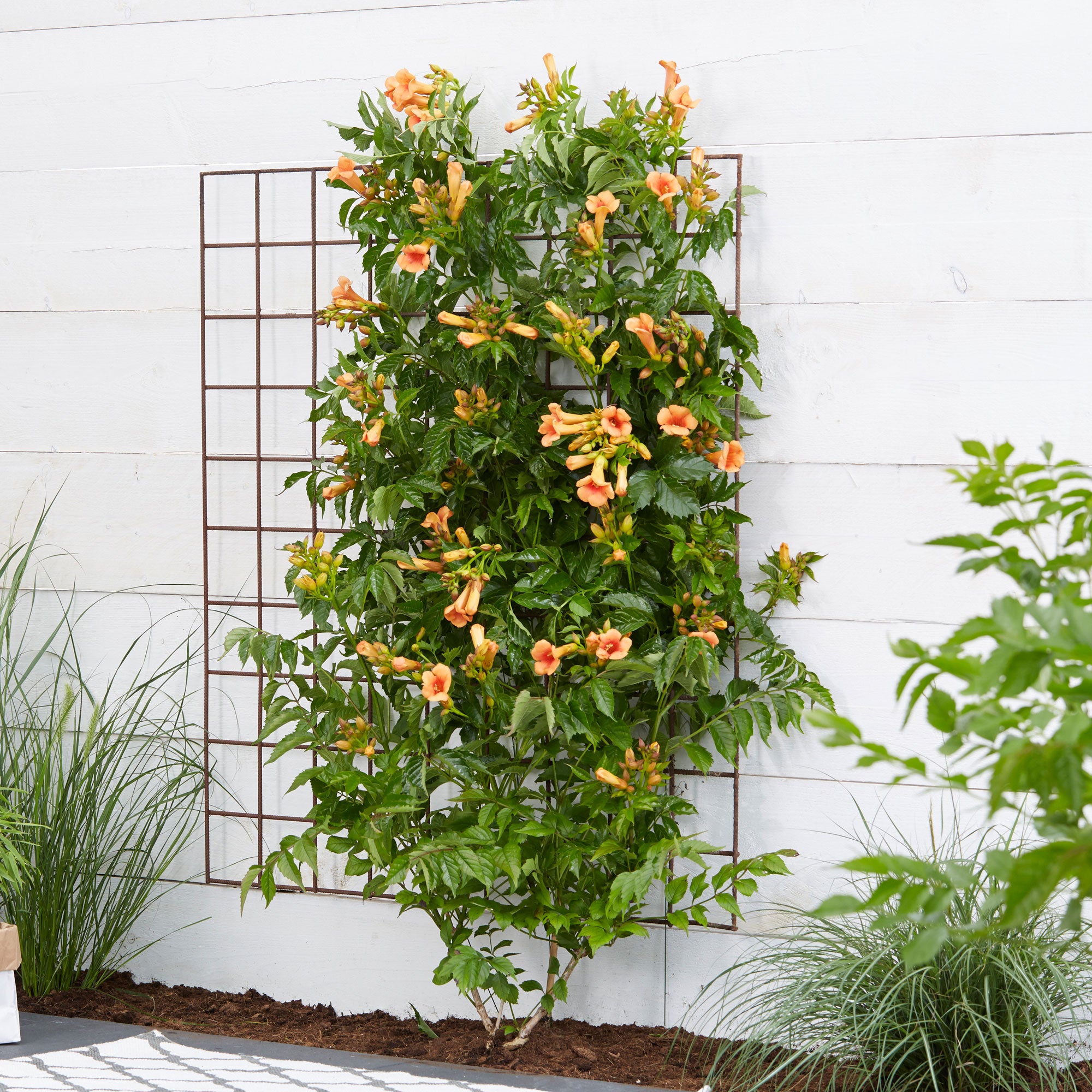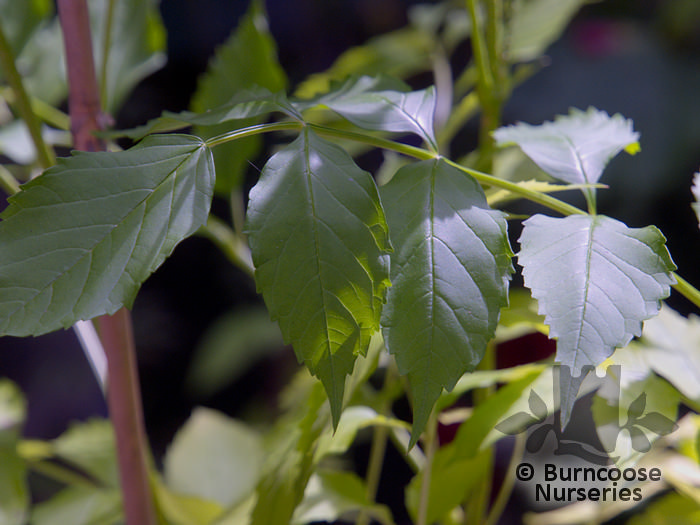Campsis Indian Summer: The Trumpet Vine That Blooms Until Fall
Campsis Indian Summer: The Trumpet Vine That Blooms Until Fall
Campsis Indian Summer is a beautiful and versatile vine that is known for its long-lasting, trumpet-shaped flowers. It is a hybrid of two species of trumpet vine, Campsis radicans and Campsis grandiflora, and it combines the best qualities of both parents.
Campsis Indian Summer is a vigorous grower, and it can reach heights of up to 40 feet. It is a deciduous vine, so it will lose its leaves in the winter, but it will come back in the spring with a vengeance.
The flowers of Campsis Indian Summer are orange-red in color, and they are borne in large clusters. They are very fragrant, and they attract hummingbirds and other pollinators. The flowers bloom from midsummer to early fall, so you can enjoy their beauty for several months.
Campsis Indian Summer is a relatively easy plant to care for. It prefers full sun, but it will tolerate some shade. It also prefers moist, well-drained soil. You should water it regularly, especially during the summer months.
Campsis Indian Summer is a great plant for a variety of uses. It can be used to cover a fence, a trellis, or a pergola. It can also be used as a groundcover.
If you are looking for a beautiful and long-lasting vine that will add color and interest to your garden, then Campsis Indian Summer is a great option.
Main Content
Planting and Care
Campsis Indian Summer is a relatively easy plant to care for, but there are a few things you should keep in mind when planting and caring for it.
- Planting: Campsis Indian Summer should be planted in full sun to partial shade. It prefers moist, well-drained soil. The best time to plant is in the spring or fall.
- Watering: Campsis Indian Summer needs regular watering, especially during the first year after planting. Once the plant is established, it will need less water.
- Fertilizing: Campsis Indian Summer should be fertilized once a year in the spring. Use a balanced fertilizer, such as 10-10-10.
- Pruning: Campsis Indian Summer should be pruned in the late winter or early spring. Prune to remove dead or diseased branches, as well as any branches that are crossing or rubbing against each other.
Harvesting
The flowers of Campsis Indian Summer can be harvested for fresh cut flowers. They are also edible, and they can be used to make jelly or tea.
Propagation
Campsis Indian Summer can be propagated by seed, cuttings, or air layering. Seed propagation is the most common method, but it can be slow and unpredictable. Cutting propagation is a more reliable method, but it requires a bit more skill. Air layering is a good method for propagating large vines.
Problems
Campsis Indian Summer is a relatively problem-free plant, but it is susceptible to a few pests and diseases. The most common pests are aphids, spider mites, and scale insects. The most common diseases are powdery mildew and verticillium wilt.
Conclusion
Campsis Indian Summer is a beautiful and versatile vine that is easy to care for. It is a great choice for a variety of uses, and it can add color and interest to any garden.
Campsis Indian Summer is a beautiful flowering vine that is known for its vibrant orange and red blooms. It is a native of North America and can be found growing in a variety of climates. Campsis Indian Summer is a popular choice for landscaping because it is easy to care for and can provide a splash of color in the fall.
If you are interested in learning more about Campsis Indian Summer, I encourage you to visit Garden Wiki. This website has a wealth of information about the plant, including its history, care requirements, and varieties. You can also find photos and videos of Campsis Indian Summer in bloom.
FAQ of campsis indian summer
Question 1: What is Campsis Indian Summer?
Answer: Campsis Indian Summer is a hybrid trumpet vine that is known for its beautiful, orange-red flowers. It is a vigorous grower and can reach heights of up to 20 feet. Campsis Indian Summer is a deciduous vine, so it will lose its leaves in the winter. It is hardy in USDA zones 4-9.
Question 2: Where does Campsis Indian Summer grow best?
Answer: Campsis Indian Summer prefers full sun and well-drained soil. It can tolerate some shade, but it will not flower as well. Campsis Indian Summer is a relatively drought-tolerant plant, but it will benefit from regular watering during the summer months.
Question 3: How do I care for Campsis Indian Summer?
Answer: Campsis Indian Summer is a relatively easy plant to care for. It needs to be watered regularly, especially during the summer months. It should be fertilized once a year in the spring. Campsis Indian Summer is a vigorous grower, so it will need to be pruned regularly to keep it in check.
Question 4: What are some common problems with Campsis Indian Summer?
Answer: Some common problems with Campsis Indian Summer include:
- Anthracnose: This is a fungal disease that can cause the leaves to develop brown spots.
- Powdery mildew: This is a fungal disease that can cause the leaves to develop a white powdery coating.
- Aphids: These small insects can suck the sap from the leaves, causing them to wilt and yellow.
- Scale insects: These small insects can attach themselves to the stems and leaves, causing them to become discolored and stunted.
Question 5: How do I propagate Campsis Indian Summer?
Answer: Campsis Indian Summer can be propagated by seed, cuttings, or layering. Seed propagation is the most difficult method, but it can be successful. Cutting propagation is the most common method, and it is relatively easy to do. Layering is a method of propagating plants that involves bending a stem down to the ground and covering it with soil. The stem will eventually root and form a new plant.
Image of campsis indian summer
5 different images of "campsis indian summer" from pinterest.com:
- Image 1: A close-up of a trumpet creeper flower in full bloom. The flower is yellow-orange with a red throat.

- Image 2: A long vine of trumpet creeper covered in flowers. The flowers are in various stages of bloom, from just opening to fully open.

- Image 3: A trumpet creeper growing up a tree. The vine is covered in flowers, and the tree is starting to turn yellow in autumn.

- Image 4: A group of trumpet creepers growing in a garden. The vines are covered in flowers, and the background is a blue sky.

- Image 5: A close-up of a trumpet creeper leaf. The leaf is pinnate, with leaflets that are dark green on top and lighter green underneath.

Post a Comment for "Campsis Indian Summer: The Trumpet Vine That Blooms Until Fall"